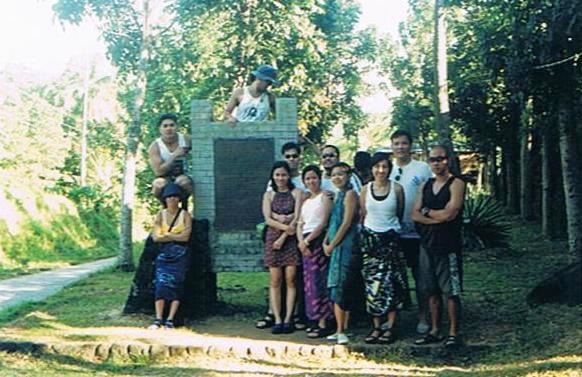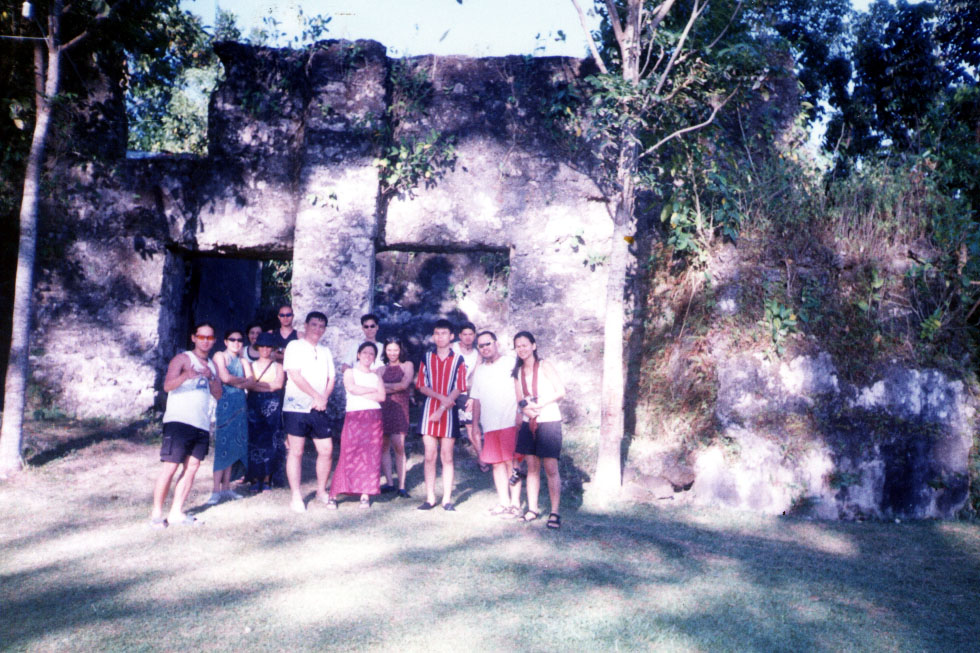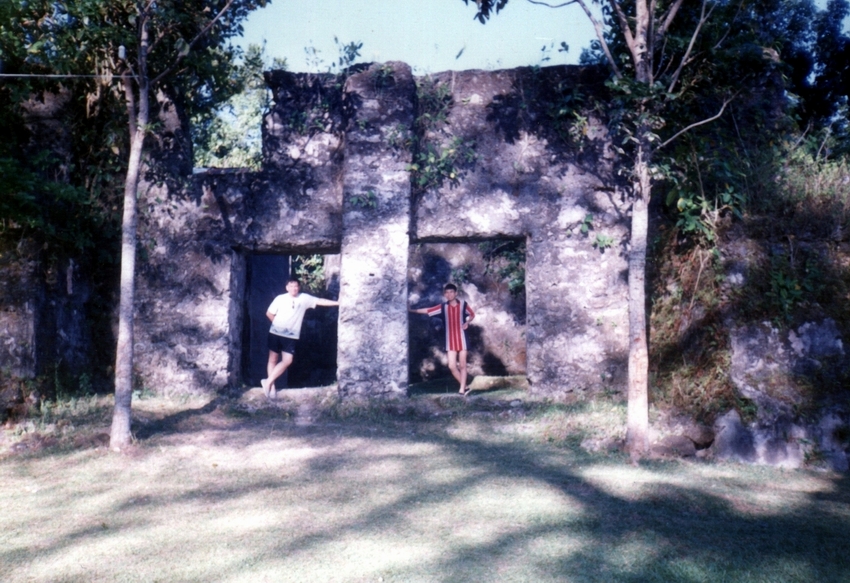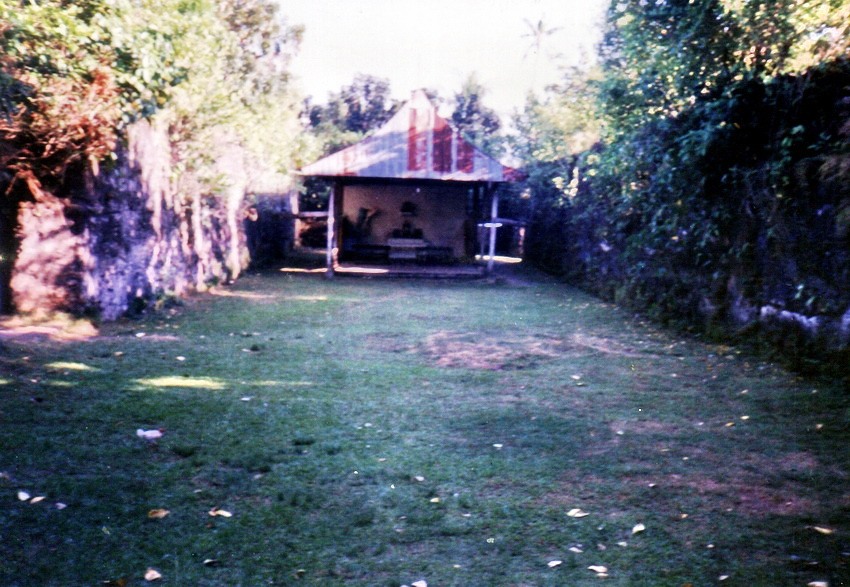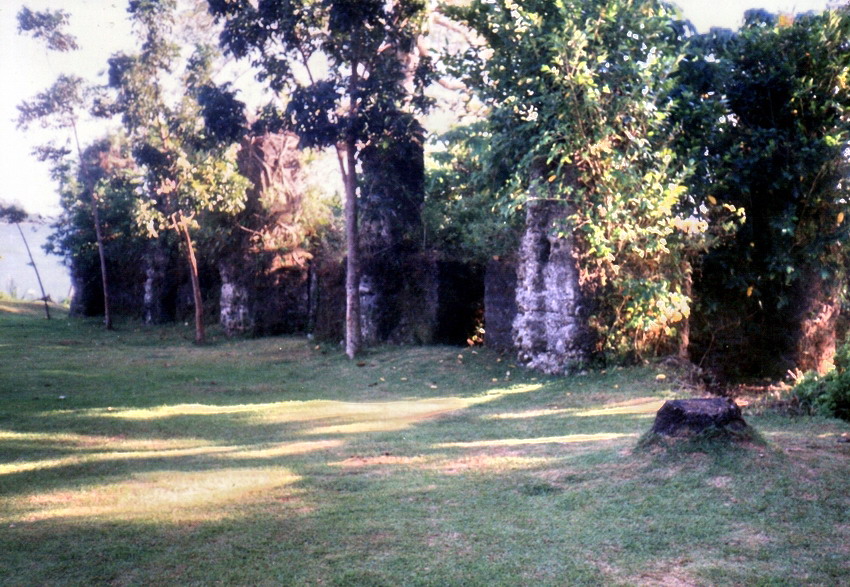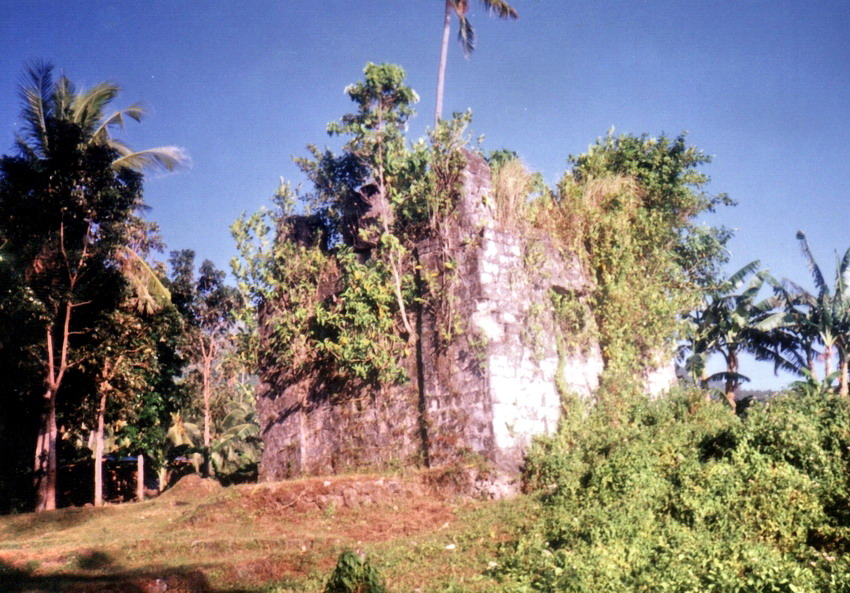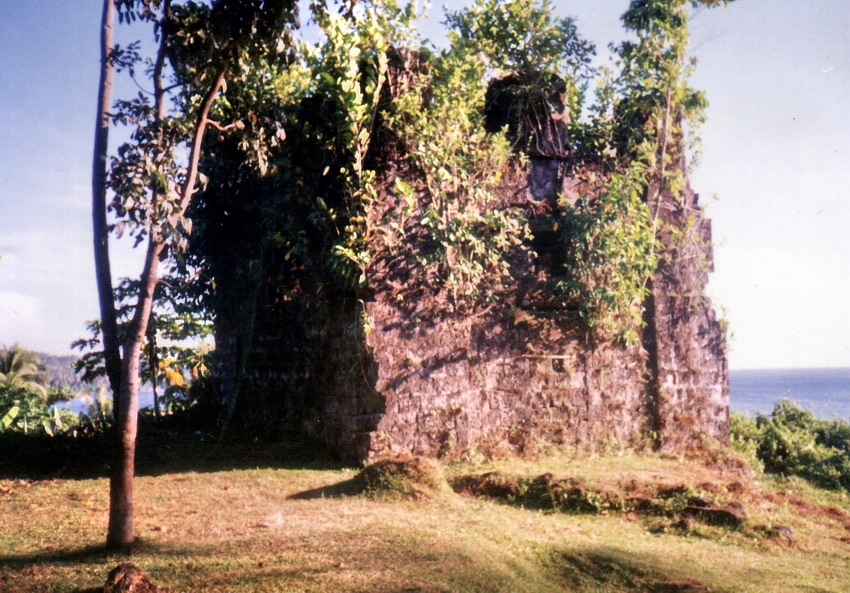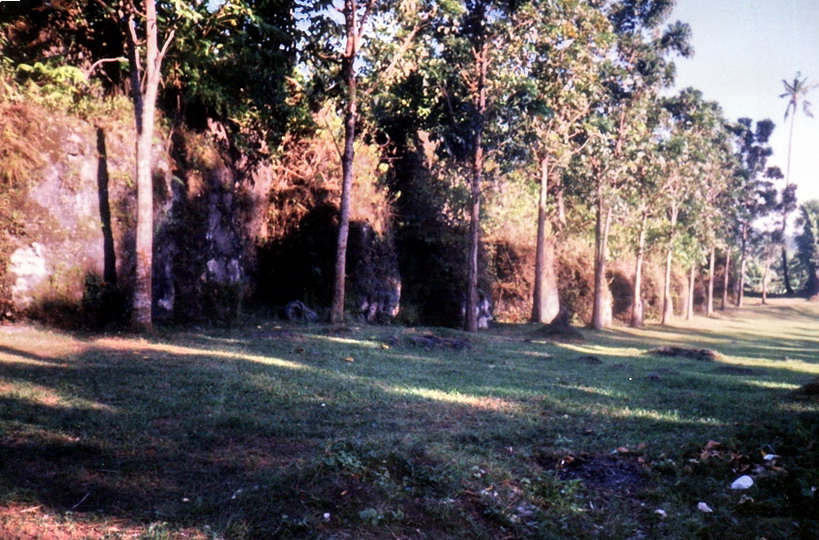From Plaza Saalcedo, I next drove to the Simbahan a Bassit (meaning “small church”) Cemetery, which contains the graves of the town’s eminent families. It has a cemetery chapel, one of the interesting religious heritage structures in the country. Located within a camposanto, very few of these remain in the country today and many are in a sad state of deterioration. This well-preserved chapel, done in the Neo-Classical style, has a facade supported by rectangular columns and adorned with a pair of Baroque-style volutes and some floral details.
 |
| Simbahan a Bassit Chapel |
Started in 1610, it was probably the first church built with permanent materials in the Ilocos. Blessed on November 9, 1852, it it also has an espadaña (a wall with holes in which bells are hung), the only one of its kind in the entire Ilocos region. Its floors, made mostly of granite slabs, were mostly used as ballast by Chinese trading junks left behind on the return trip to China. The chapel houses a statue of the Crucified Christ behind the main altar. Almost as old as the church itself, the image is reverently called Apo Lakay (Ilocano for “old man”) and is renowned for its miracle cures.
Simbahan a Bassit Cemetery: Quezon Ave., Liberation Blvd., Vigan City, Ilocos Sur.




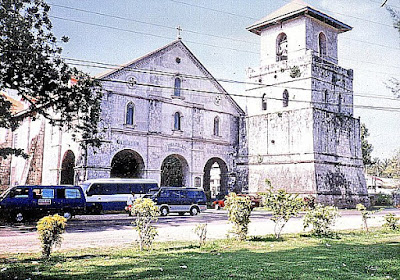



.jpg)






